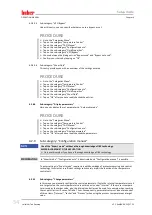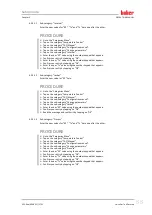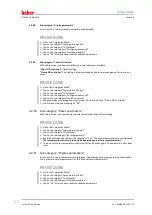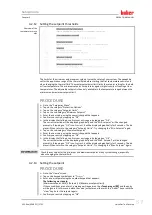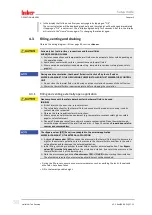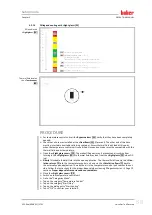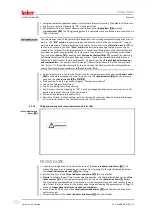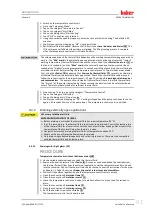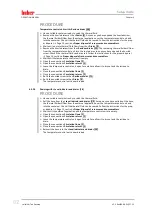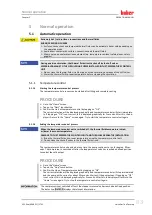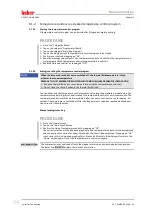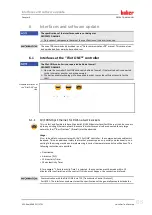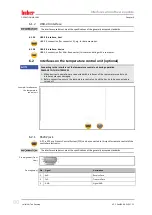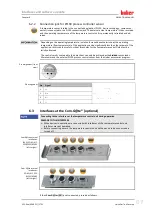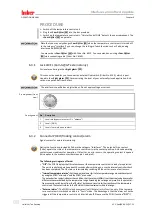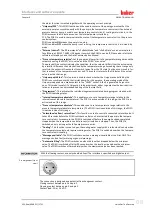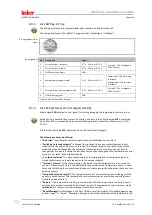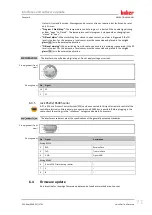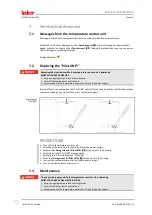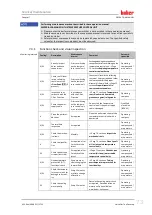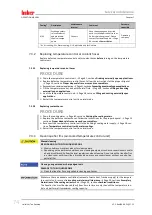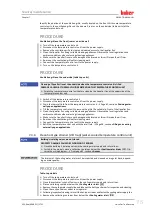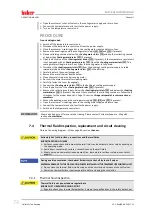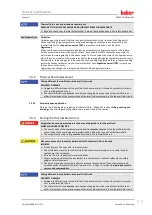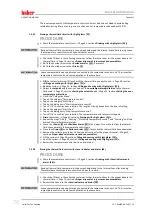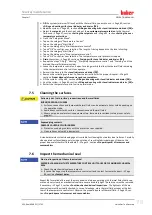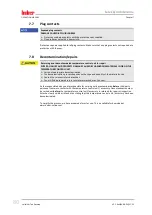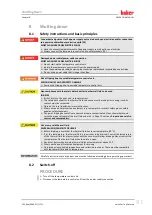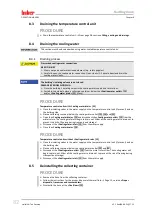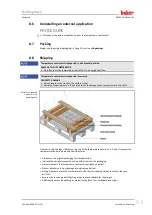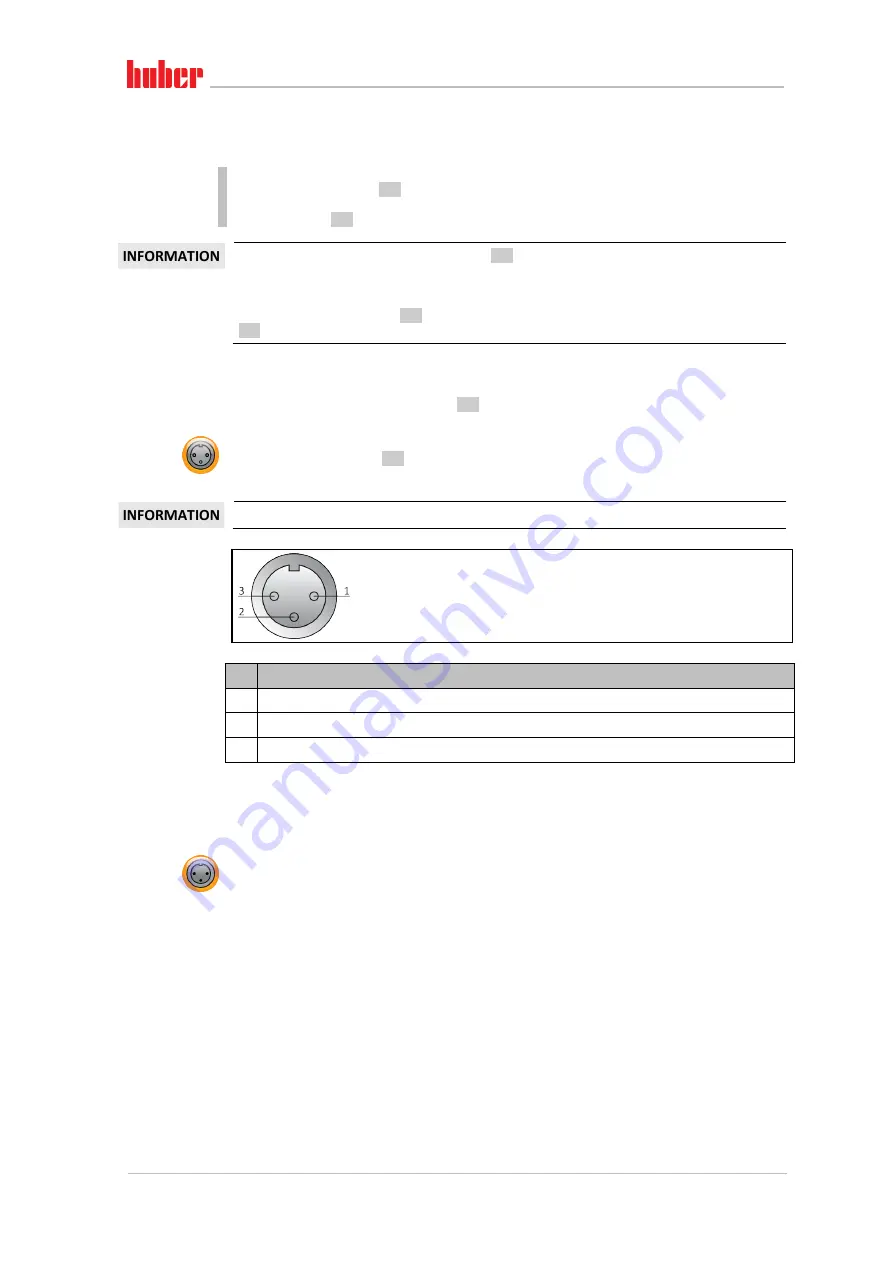
Interfaces and software update
OPERATION MANUAL
Chapter 6
Unichiller® eo Desktop
V2.2.0en/09.08.21//17.12
68
PROCEDURE
Switch off the temperature control unit.
Plug the
>Com.G@te<
[46] into the slot provided.
Switch on the temperature control unit. “Unistat Control ONE” detects the new component. The
>Com.G@te<
[46] is operable.
Note that you may only change
>Com.G@te<
[46] when the temperature control unit is turned off.
In the category “Interfaces” you can change the settings of each function such as PoKo, analog
interface and RS232/RS485.
You may order
>Com.G@te<
[46] with Order No. 6915. You can extend an existing
>Com.G@te<
[46] via a connecting cable (Order No. 16160).
6.3.1
Jack LEVEL (Com.G@te® external only)
For level monitoring in the
>Sight glass<
[23].
This connection enables you to connect an external float switch (Order No. 6152), which is posi-
tioned in the
>Sight glass<
[23], for monitoring the level of your externally closed application. Acti-
vation via a potential-free contact.
The interface is specified as a digital input. Do not apply voltage or current.
Pin
Description
1
Level test (bypass via contact 2 → “absence”)
2
Level – (GND)
3
Level +
(normally open contact)
6.3.2
Connector POKO (floating contact) alarm
Signal contact for external monitoring.
Notice the functions provided by PoKo in the category “Interfaces”. The potential-free contact
(PoKo) signals the state of the temperature control unit via the contact position. A closed operating
contact means readiness for operation. If a fault or an error occurs, the operating contact is opened
(this applies to the make contact between pin 1 and pin 2).
The following settings are offered:
▪
“Off”:
The POKO displays the OK state whenever the temperature control unit is ready for operation.
The unit is ready for operation about 30 seconds after switching on, once the internal controller check
has been completed. The OK status is terminated by switching off the unit or in case a fault occurs.
▪
“Internal temperature relative":
Set the upper and lower limit of a temperature range around the setpoint
by using the POKO “min. value” and the POKO “max. value”.
The potential-free contact indicates the condition, that the setpoint differs from the actual value by a smaller
difference than was defined by the temperature range. Exceeding the set range only results in the potential-
free contact to switch (away from the OK state), but does not result in further reactions of the temperature
control unit. The contact returns to the OK status if the actual value is within that range.
▪
“External alarm”:
The POKO relay becomes active (OK state) in this function only, if the tempera-
ture control unit is switched on and is in “Fault” mode. The advantage is that the alarm will not be
triggered if the temperature control unit is switched off. Please use the POKO function
“OFF”
if
Pin assignment (front
view)
Pin assignment

